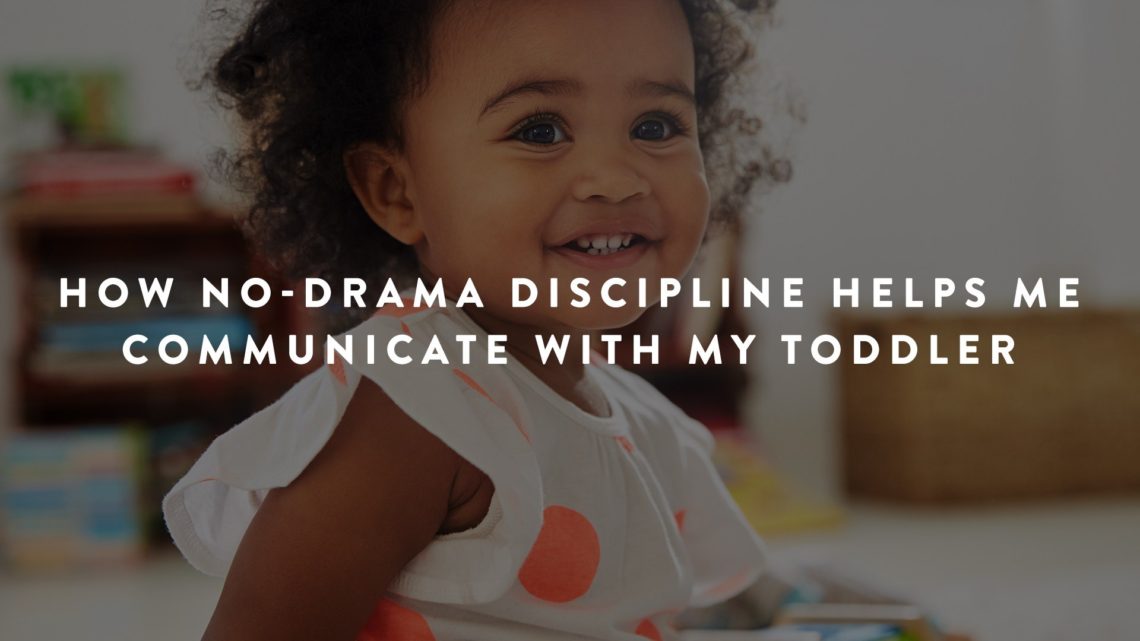
My toddler daughter, Arden, is very toddlery these days. And by toddlery, I mean I can’t help but look at the clock and wonder how in the world I’m supposed to make it to bedtime without us both collapsing in a puddle of tears. I’ve always been told the age of three is a whole new level of madness, only more cerebral and intense because now there are words—So. Many. Words.
Communicating With Toddlers
Science tells us as toddlers’ emotional capacities grow, they tend to feel and express more frustration because they have a difficult time expressing all those newfound feelings. I get it, Science. I get it. Even though my daughter’s seemingly over-the-top reaction to things such as me spreading butter on her toast without her help can get under my skin, these moments are very real to her.
But no matter how annoying these reactions are to me, I still felt like I was missing the mark somehow. Most times, I felt like, despite our age differences, we weren’t communicating well. That lack of communication would lead my daughter into an even more intense downward spiral that ended in the time out chair that never seemed to work.
No-Drama Discipline
Enter my lifesaver in the form of a book: No-Drama Discipline: The Whole-Brain Way to Calm the Chaos and Nurture Your Child’s Developing Mind by Drs. Daniel J. Siegel and Tina Payne Bryson.
(You guys. If you haven’t read this book and you’re up to your ears in toddler meltdowns or general misunderstandings with your kids, you need to stop right now and go buy this book. Right now. I mean it.)
Engaging our Kids
At the core of No-Drama Discipline is the recurring theme of engaging your kids rather than enraging them. When they’re at the heart of a meltdown, our gut reaction is to stop the meltdown by explaining why their behavior is irrational and not okay. But the book shares the root of the word ‘discipline’ is ‘disciple,’ or ‘to teach.’ When their emotions are heightened, this is the worst possible time for a teachable moment (and man, do I love those!). I mean, how receptive would you be to instruction when you’re mad? Then, how can we expect our kids to respond well when they’re upset?
Disarming our Kids
Imagine it this way: An angry dog is approaching you. Do you yell angrily at it, hoping to disarm it with your threatening posture and forceful tone? Or do you put your hands up, speaking softly to lower the perceived threat?
Disarming our kids and lowering the perceived threat is the way we can truly connect with them. We can do this by getting below their eye level to start. Then, we need to be very curious about them, asking questions instead of assuming we know their intentions.
Guiding our Kids
Once we ask them why they misbehaved or are acting the way they are, we can express understanding, followed by a reminder of what the rules are only after a connection is established (sometimes, this means waiting a day or two before bringing it up again).
When they’re calm, then we can guide them to making positive, productive choices on their own—well, that’s the hope, anyway. We continue to repeat this process until the end of time.
I’ve been putting what I’ve learned about No-Drama Discipline into practice, and wouldn’t you know, Arden doesn’t meltdown nearly as much. Now, don’t get me wrong, things are far from perfect and she is still a toddler, but we’re communicating, and it’s nice to feel as if we’re mutually understanding each other more. Dare I say it, I’m enjoying this toddler phase a bit more.

